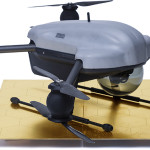By Keegan VanLeeuwen
In March of 2015, Shawn Usman borrowed a commercial quadcopter from his friend and flew it around his apartment complex in Washington D.C. Being a relatively new drone pilot, Shawn lost sight of his friend’s drone and decided it must have landed somewhere near the National Mall. That same night, national media coverage blew up over a rogue drone landing in the south White House lawn. Shawn faced up to $5,500 charges in fines from the FAA, but the case was ultimately dropped by the U.S. Attorney because it was deemed “totally inadvertent and completely unintentional.” After September 11th, the FAA and TSA strictly limited drone and model flight in the D.C area, making it completely illegal to even fly toy quadcopters in Washington D.C. However, most people in the D.C area don’t know that this ban was never lifted. This drone stunt in D.C. proved how little anyone knows about drone law, for both recreational and commercial purposes. Drone law, especially law provided by the FAA, has been extremely vague and contradictory in the U.S. in the past decade. The FAA is criticized for limiting commercial flight in business and unclear regulations in recreational flights. However, in the recent past, the FAA has cleared up some confusion with the passing of the Part 107 on June 21, 2016, the Part 107 commercial pilot clarification on August 29, 2016, and Fly for Fun guidelines for hobbyists to create easier access and regulations in the drone community.
For commercial use in the past, pilots had relatively few options. The FAA had originally banned all commercial drones, but still allowed commercial pilots to apply for special waivers, which were basically permission forms to the FAA asking to fly commercially. The time and cost factors required to becoming a drone pilot restricted businesses from looking into this innovative field. The clarification of commercial UAVs was finally addressed in June of 2016, as the FAA released their Part 107 which states a commercial drone must weigh less than 55 pounds, can fly no higher than 400 feet, etc. Part 107 did address most of the commercial drone concerns, but was left open to interpretation on pilot registration. Finally, in August of 2016, the FAA amended the commercial drone policy in Part 107 to work better with businesses while also improving safety. Now to fly for commercial use, a pilot must pass a remote pilot airman certificate for a small UAS rating. In order to complete the certification, the pilot must pass an aeronautical knowledge test or hold a part 61 pilot certificate, be vetted by the TSA, and be at least 16 years old. After completion, the drone pilot must make available his drone to be inspected by the FAA, report to the FAA of any serious injury or property damage, conduct preflight testing, and ensure the drone complies with registration requirements. The remote pilot airman certificate now allows pilots to waiver from regulated areas in Part 107 if needed and legally charge for their services. The Part 107 is great news for businesses, and it’s projected to generate $82 billion dollars for the US economy in the next 10 years.
For hobbyist use, Drone pilots are not as concerned with the FAA regulations, but are concerned with the clarity within the laws themselves. The FAA defines a drone as an Unmanned Aerial Vehicle (UAV) or Unmanned Aerial System (UAS) which is an aircraft without a human pilot on board. The spectrum of UAVs, however, consists of micro quadcopters on one end and military combat drones on the other. The FAA published their Fly for Fun regulations which states you must register your drone if it’s between 0.55 lbs and 55 lbs and that you must be 13 years old to fly. These regulations also include ones very similar to Part 107 which finally gives a little resolution to what is okay to fly in the eyes of the FAA, but is still open to a lot of interpretation. These regulations don’t clearly state specifics like what “reckless flying” is or how close to “other aircraft” drones can be. Above all, the FAA doesn’t have any power to enforce these laws, they have to go to local or state law enforcement in order to administer a penalty. The FAA has also limited which airspaces it is acceptable to fly drones in for both recreational and commercial uses. According to the Part 107 regulation, drone flying is acceptable in Class G airspace but restricted in Class B, C, D, and E airspaces and must notify Air Traffic Control. FAA recreational regulations are only “best practices” and even contradict with the FMRA 2012 regarding hobbyist use. Although not exactly required, it sometimes is the safest option for hobbyist drone users to follow Part 107 regulations, just because all other FAA recreational laws are left ambiguous.
Although the FAA drone laws have had problems with clarity and definition, the FAA is here to keep pilots and citizens safe. In Part 107, the FAA made mostly all of their regulatory decisions based off of safety, such as no night flying, no flying over persons not involved in the flight, and clearing way for other aircraft. However, drone laws are still extremely vague when it comes to privacy laws, which should cover basic constitutional safety rights. The FAA has voluntary guidelines addressing privacy in Part 107, but has no way to regulate or enforce those rules.
Even though the FAA has provided some recent guidance in their commercial drone regulation laws, they still haven’t cleared up leftover interpretations concerning hobbyist use. One effective solution for the FAA would to be make a similar Part 107 for recreational drones to clarify any confusion, which in turn would satisfy the FAA’s goal to make the skies safer.


